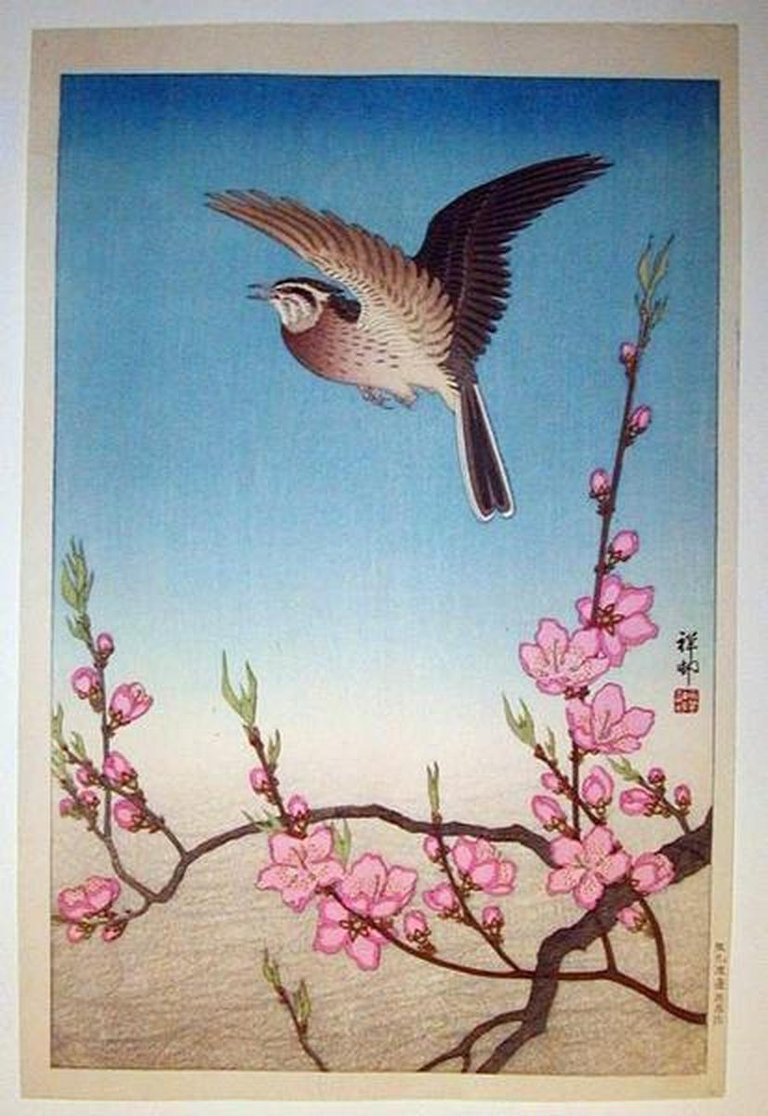Endless Song, Fleeting Spring ~ Haiku of Japan
The skylark’s song, like spring itself, feels both joyful and fleeting. Bashō caught that tension in this haiku — one that’s easy to read, but harder to forget.
nagaki hi mo saezuri taranu hibari kana
but still not tired of singing,
the skylark
—Bashō


This is a seemingly simple haiku, but one that contains a bit more if we dive beneath the surface.
It can help to explore multiple translations to get a better feel for what’s going on. A more literal rendering might put the middle line as something like “not yet tired of singing”, making the full poem:
not yet tired of singing,
the skylark
I kind of like the image of the bird as full of boundless energy, joyfully singing on even as the long spring day draws to a close. That’s the feeling I aimed for in my first version. But the Japanese taranu (足らぬ) has a slightly different nuance: it means “not enough”, suggesting that as long as the day may be, it’s insufficient for all the skylark wants to sing. This adds a subtle sadness, a longing. The bird feels even this long spring day isn’t long enough.
It’s not quite the sadness of aging or death, but more the melancholy of spring’s fleeting beauty. Spring in Japanese poetry is often tied to youth, joy, and carefreeness, so its end feels like the fading of something precious. This may be universal as even English connects these images, for example referring to our youth as the springtime of our life.
Some commentators have suggested that the skylark might be a metaphor for Bashō himself. If so, he may have drawn inspiration from an 8th-century waka by Ōtomo no Yakamochi published in the 8th century Man’yōshů.
uraura ni tereru haruhi ni hibari agari
kokoro kanashi mo hitori shi omoeba
In the soft radiance
of a shining springtime sun,
a skylark soars—
and sorrow fills my heart
as I sit and think alone.
So which is it — happy or sad? A little of both I think. That tension between joy and sorrow is what gives the poem its power. If you want the brighter reading, look at my first version. If you want the more Buddhist, more existential reading, consider the second.
There are two kigo (season words), by the way. nagaki hi, “long day”, and habari, skylark — both kigo for all spring.
-
That is, me! If you like this translation, feel free to use it. Just credit me. Also link here if you can. ↩
❦
 |
David is an American teacher and translator lost in Japan, trying to capture the beauty of this country one photo at a time and searching for the perfect haiku. He blogs here and at laspina.org. Write him on Mastodon. |
a
haha could be!
Birds certainly do seem to have a boundless amount of energy. I think this is more happy that sad. That's just my guess though.
Bashō was a Zen guy, so I'm guessing he probably had the more remorseful meaning in mind, but I also like the positive reading which is why I led off with it.
I agree with you on the fact that the tension between joy and sorrow is powerful. It's similar to the thin line between love and hate. ☺
Absolutely!
So, I had to look up the call of the skylark, we do not have them in my area 😄 and it is without a doubt, a very cheerful and upbeat chirp.
This really makes me ponder on the second haiku. I think Basho was experiencing such an immense amount of sadness, that it almost becomes compounded by happiness. It's similar to when you're depressed at a party, yet everyone around you is laughing and having fun, and you end up feeling even worse... I get the impression he was dealing with a lost love, or perhaps some heavy grief...
Thank you for sharing this, some very somber thoughts to reflect on...
Glad you enjoyed it!